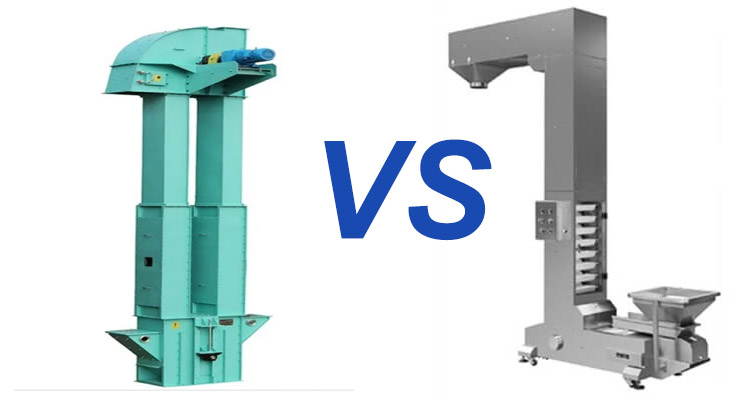What is the difference between a bucket elevator and a food grade bucket elevator?
Wednesday March-26 2025 16:19:29
The core differences between Bucket Elevator and Food Grade Bucklet Elevator are material selection, sanitary design, compliance standards and application scenarios. The following is a detailed comparison:

1. Material Difference
| Components |
Normal Bucklet Elevator |
Food Grade Bucklet Elevator |
|
Body/hopper |
Carbon steel (easy to rust) |
304/316 stainless steel (corrosion-resistant, pollution-free) |
|
Chain/belt |
Ordinary rubber or carbon steel chain |
Food grade PU belt or Stainless steel chain (FDA certified) |
|
Seal |
Ordinary rubber |
Silicone or EPDM (non-toxic, high temperature resistant) |
Reason: Food-grade equipment needs to avoid metal ion migration and microbial growth.
2. Hygienic design
|
Features |
Normal Bucklet Elevator |
Food Grade Bucklet Elevator |
|
Structure |
There are many welding gaps and dead corners. |
Rounded corner design, no sanitary dead corners |
|
Cleaning method |
Manual cleaning |
**CIP (online cleaning)** interface, supports automatic cleaning |
|
Surface treatment |
Painting or galvanizing |
Mirror polishing (Ra≤0.8μm), to prevent residue |
Example: The hopper of a food grade elevator can be quickly disassembled and complies with EHEDG (European Hygienic Engineering and Design Group) standards.
3. Compliance certification
|
Standards |
Normal Bucklet Elevator |
Food Grade Bucklet Elevator |
|
International Certification |
ISO 9001 (General Quality) |
FDA 21 CFR (US), EC 1935/2004 (EU) |
|
Domestic Certification |
GB/T Mechanical Standard |
GB 4806.9-2016 (China Food Contact Material Standard) |
Key point: Food-grade equipment must pass material migration tests (such as heavy metal precipitation tests).
4. Application scenario comparison
|
Type |
Applicable industry |
Typical materials |
Special requirements |
|
Ordinary type |
Building materials, mining, feed |
Cement, ore, grain (not directly edible) |
Wear-resistant, dust-proof |
|
Food grade |
Food processing, pharmaceuticals, dairy products |
Flour, powdered sugar, milk powder, pharmaceutical raw materials |
Anti-pollution, traceability |
Case:
Bucklet Elevator: transport feed corn (allows trace contamination).
Food Grade Bucklet Elevator: transports infant formula (needs sterile environment).
5. Price difference
| Model example |
Normal Bucklet Elevator(Price) |
Food Grade Bucklet Elevator(price) |
|
TD160 |
1,200-1,200-1,800 (Carbon Steel) |
3,500-3,500-5,000 (Stainless Steel) |
|
NE100 |
4,000-4,000-6,000 (Chain Drive) |
8,000-8,000-12,000 (Stainless Steel + FDA Chain) |
Reason for price difference: Stainless steel costs 2-3 times more than carbon steel, and the certification process adds 20-30% to the cost.
Food Grade Bucklet Elevator is essentially different from ordinary models through material upgrades, sanitary design, and strict certification to ensure compliance with food safety requirements. When choosing, decisions should be made based on industry regulations (such as HACCP, GMP) and material characteristics (such as allergen risks).
